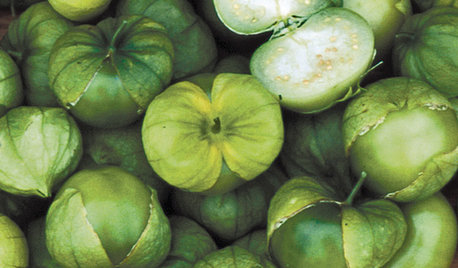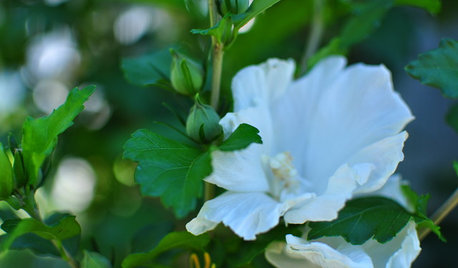Tomatoes
freemangreens
15 years ago
Related Stories

EDIBLE GARDENSSummer Crops: How to Grow Tomatoes
Plant tomato seedlings in spring for one of the best tastes of summer, fresh from your backyard
Full Story
LIFEKitchen Traditions: Tomato Season Meets a Family Legacy
Somewhere a Sicilian great-great-grandmother is smiling at a bowl of American-made sauce
Full Story
COLOR10 Reasons to Make a Splash With Tomato Red
You won’t duck at these tomatoes. See how bold red shades can play up architecture, light up a dark spot and add drama
Full Story
ARCHITECTUREHouzz Tour: Fresh Ideas in a Former Tomato Packing Shed
A formerly metal-clad structure is now a beautiful wood home designed to capture the light and preserve open space
Full Story
FARM YOUR YARDHouzz Call: Home Farmers, Show Us Your Edible Gardens
We want to see where your tomatoes, summer squashes and beautiful berries are growing this summer
Full Story
SUMMER FRUITS AND VEGETABLESSummer Crops: How to Grow Tomatillos
Grow this Mexican native for the freshest salsa verde — and for fewer problems than its tomato cousins
Full Story0

GARDENING GUIDESCalifornia Gardener's June Checklist
Update your hydrangeas, catch up on tomatoes and more ways to enjoy your California garden in June
Full Story
HOUZZ TOURSMy Houzz: Country-Chic Dutch Family Home
An organizer lightens up a dark 1970s farmhouse on a Netherlands tomato farm with open space and soothing shades of gray
Full Story
GARDENING GUIDESNortheast Gardener's September Checklist
Pluck those tomatoes, enjoy ever-changing grasses and get an eyeful of exuberant zinnias
Full Story
GARDENING GUIDESMid-Atlantic Gardener's August Checklist
Bring in the bounty of tomatoes, savor the show of grasses and start seeding some cool-season plants
Full Story






tbaleno
greystoke
Related Professionals
West Milford Landscape Architects & Landscape Designers · Clemson Landscape Architects & Landscape Designers · Lake Oswego Landscape Architects & Landscape Designers · Wixom Landscape Architects & Landscape Designers · Paradise Landscape Architects & Landscape Designers · Lakeland Landscape Contractors · Columbine Landscape Contractors · Cordele Landscape Contractors · Ellensburg Landscape Contractors · Haverhill Landscape Contractors · Pompano Beach Landscape Contractors · Rockwall Landscape Contractors · Southbury Landscape Contractors · Vashon Landscape Contractors · Wilton Landscape Contractorsjoe.jr317
garysgarden
freemangreensOriginal Author
garysgarden
freemangreensOriginal Author
garysgarden
garysgarden
hillbillygal